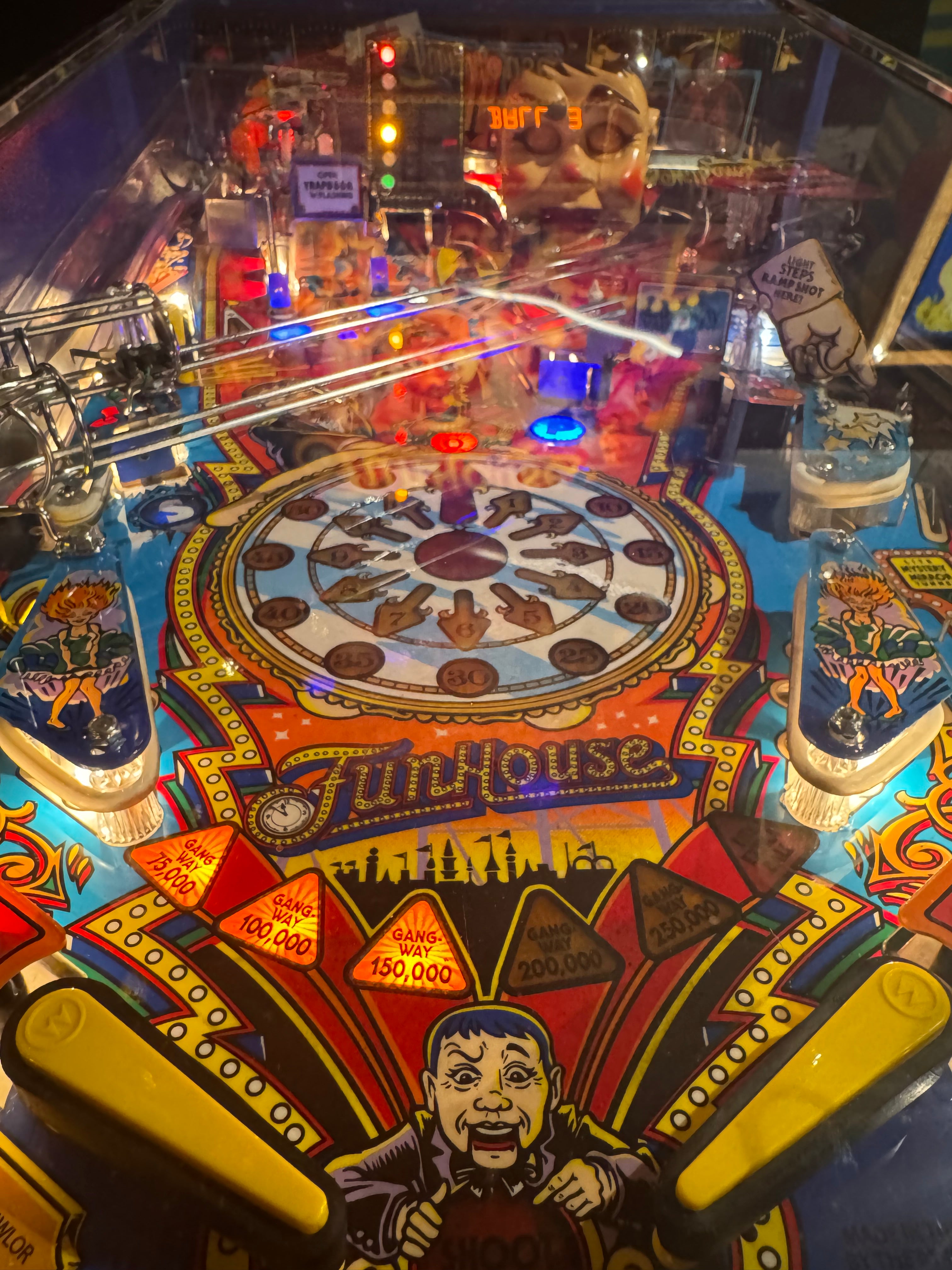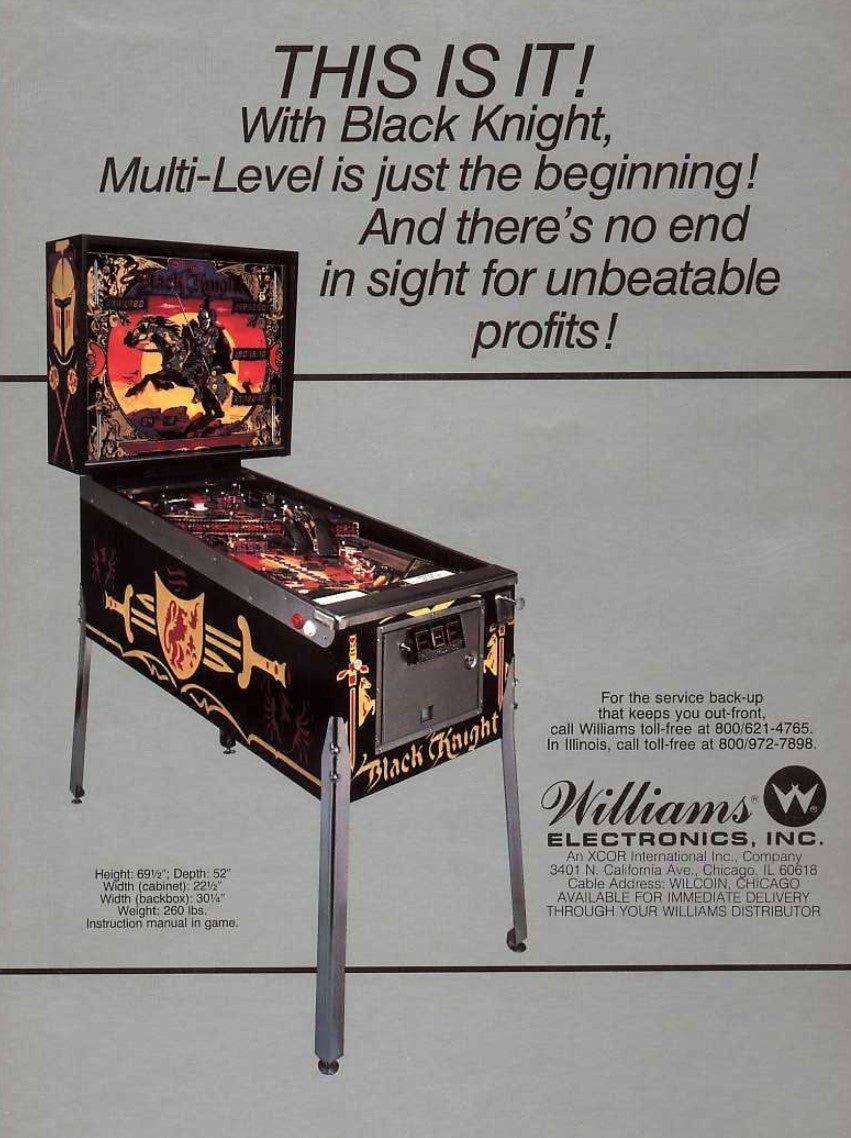Introduction
Pinball is more than just a game—it’s a cultural icon that has spanned centuries, capturing the imagination of players around the world. From its early roots in European parlor games to the state-of-the-art machines of today, the story of pinball is filled with innovation, challenges, and resurgence. Let’s dive into the rich history of pinball, exploring how it evolved from simple beginnings to become the vibrant, competitive, and technologically advanced game it is today.
Watch the first part of an amazing series by Bralex about the history of pinball below.
(Part 2 here, part 3 here, part 4 here)

Video
The Origins: Early Parlor Games and Bagatelle
The story of pinball dates back to 18th-century France, where a game called bagatelle was played. Bagatelle involved using a cue stick to shoot balls across a sloped table filled with pins, holes, and obstacles. Players would try to land the balls into specific scoring areas, much like modern pinball.
Fun Fact: The word pinball is derived from the use of pins in these early games to guide and redirect the ball’s path.
The First Coin-Operated Machines: The 1930s Boom
In the 1930s, pinball as we know it started to take shape. The introduction of coin-operated machines brought pinball into public spaces like bars, arcades, and restaurants, transforming it from a parlor game to a social experience.
Key Milestones:
- 1931: Baffle Ball, created by David Gottlieb, became one of the first successful coin-operated pinball machines. It featured a simple, non-electrical design.
- 1933: Bally Manufacturing Corporation introduced Ballyhoo, which added new scoring possibilities and popularized pinball further.
The Birth of Flippers: The 1940s Revolution
Until the 1940s, pinball was purely a game of chance, as players could not control the movement of the ball once launched. That changed with the invention of the flipper.
1947: Humpty Dumpty, created by Harry Mabs for Gottlieb, was the first pinball machine to feature flippers. This innovation gave players the ability to control the ball’s trajectory, transforming pinball into a game of skill.
Why It Matters: The introduction of flippers made pinball more interactive and engaging, paving the way for competitive play.
The Golden Age: The 1970s and 1980s
The 1970s and 1980s were considered the golden age of pinball. During this period, manufacturers like Williams, Bally, and Gottlieb released some of the most iconic and complex machines.
Highlights of the Era:
- 1975: Williams’ “Flash”, designed by Steve Ritchie, was the first machine to incorporate electronic sounds and flashing lights, creating an immersive experience.
- 1979: The launch of Gorgar, the first talking pinball machine, captivated players with its speech synthesis.
- 1980: Black Knight, another Steve Ritchie design, introduced the dual-level playfield and magna-save feature, elevating the game’s complexity and excitement.
Cultural Impact: Pinball machines became a staple in arcades and popular culture, even appearing in movies, TV shows, and music videos.

Challenges and Resurgence: The 1990s to 2000s
The 1990s saw a decline in the popularity of pinball due to the rise of video games and home gaming consoles. However, it was also a time of groundbreaking innovations that kept the industry alive.
Key Innovations:
- 1992: The Addams Family by Bally became the best-selling pinball machine of all time, known for its interactive features and memorable callouts.
- 1993: Twilight Zone, designed by Pat Lawlor, was a technical marvel with complex mechanics and unique features like the Powerball and magnetic flippers.
Despite these hits, the industry struggled. Many manufacturers shut down, leaving only a few, such as Stern Pinball, to keep the legacy alive.
The Modern Era: The Pinball Renaissance
Thanks to dedicated enthusiasts and technological advancements, the 2010s and 2020s saw a resurgence of interest in pinball. Modern machines now feature HD screens, internet connectivity, and complex gameplay that incorporates advanced software.
Modern Marvels:
- 2013: Jersey Jack Pinball debuted with The Wizard of Oz, introducing a full-color LCD screen, redefining the expectations for modern pinball machines.
- 2021: Stern Pinball’s Godzilla, designed by Keith Elwin, combined classic gameplay with cutting-edge technology, winning multiple awards and becoming a favorite among players.
Technological Advancements:
- Internet Connectivity: Machines now come equipped with online leaderboards, allowing players to track scores and compete with others globally.
- Insider Connected™ by Stern: A feature that enables players to log into machines, track progress, and unlock achievements.

The Global Pinball Community
Today, pinball has become more than a game; it is a global community. Enthusiasts gather at pinball conventions, such as Pinball Expo and Texas Pinball Festival, to celebrate the game, compete in tournaments, and share their passion.
Fun Fact: The International Flipper Pinball Association (IFPA) oversees competitive pinball events worldwide, with a ranking system for players.
Why Pinball Still Matters
Pinball continues to attract players of all ages, blending nostalgia with innovation. Its rich history, combined with the dedication of manufacturers and enthusiasts, ensures that pinball remains a beloved part of gaming culture.
The video below shows one of Stern's latest pinballs: Metallica Remasterd.

Video
Conclusion
The journey of pinball is a testament to human creativity, resilience, and the simple joy of play. From its humble beginnings in 18th-century France to the high-tech marvels of today, pinball has evolved into a complex and beloved game that bridges generations.
Want to know learn more about pinball history?
- Visit Pastimepinball for their deepdive on pinball history
- Visit pinside.com for details about specific models
- Visit Stern's official website for their latest models
- Visit Jersey Jack Pinball official website for their latest models.
Frequently Asked Questions
Q: What was the first pinball machine with flippers?
A: “Humpty Dumpty” by Gottlieb in 1947 was the first machine to introduce flippers.
Q: Why did pinball decline in the 1990s?
A: The popularity of video games and home consoles led to a decline in arcades and interest in pinball.
Q: What is the best-selling pinball machine of all time?
A: “The Addams Family” by Bally, released in 1992.

